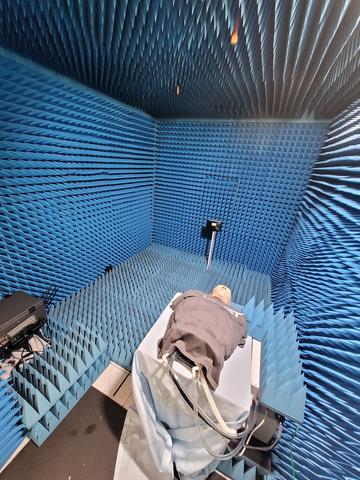人工知能とロボット支援の研究所が、より優れた電池材料の探索を加速する可能性 Artificial intelligence and robot-assisted labs could help speed the search for better battery materials
2022-12-19 アルゴンヌ国立研究所(ANL)
研究チームによると、当面の目標は、電池の正極と負極の両方で最適な界面が形成されるように、適切な化学的・電気化学的特性をもつ電解質を設計することだという。しかし、最終的には、極端な温度(高温と低温の両方)でも安定で、高エネルギーの電池をはるかに長寿命化できる固体電解質群を開発できるかもしれないと、研究者たちは考えている。
電解質のブレークスルー探しを加速するために、科学者達は、高度な特性評価と人工知能(AI)の力を借りて、より多くの可能な候補をデジタルで検索し、これまで実験室で合成するのに時間がかかっていたものを加速しています。ハイパフォーマンス・コンピューティングと人工知能のおかげで、特定の用途に合わせたさまざまな電解質の設計を可能にする最適な記述子や特性を特定できるようになりました」とMeng教授は述べています。”研究室で年に数十の電解質の可能性を調べる代わりに、計算の助けを借りて、何千もの電解質を調べています。”
「電解質は、塩、溶媒、添加物などの構成要素の組み合わせで、何十億通りもの可能性を持っています。その数をより管理しやすいものにするために、私たちはAIや機械学習、自動化された研究所の力を実際に使い始めているのです」。
<関連情報>
- https://www.anl.gov/article/designing-better-battery-electrolytes
- https://www.science.org/doi/10.1126/science.abq3750
より良い電解質の設計 Designing better electrolytes
Y. Shirley Meng,Venkat Srinivasan,Kang Xu
Science Published:9 Dec 2022
DOI: 10.1126/science.abq3750

Progress and challenges for electrolytes
Compared with the development of new cathodes and anodes, there has been less of a focus on the development of electrolytes. However, it is the electrolyte that controls the flow of ions and charges, and it is the only component in intimate contact with all the others. With the push toward higher energy and power densities, electrolytes are also involved in kinetically formed interphases that aid in the stability of a battery but can also hamper its operation. In a review, Meng et al. captures a number of trends that have emerged in the development of advanced battery electrolytes. —MSL
Structured Abstract
BACKGROUND
The electrolyte is an indispensable component in every electrochemical device, including lithium-ion batteries (LIBs). It physically segregates two electrodes from direct electron transfer while allowing working ions to transport both charges and masses across the cell so that the cell reactions can proceed sustainably. Whether powering our phones, driving our vehicles, or harvesting the intermittent energy from solar and wind farms, electrolytes in these LIBs determine how fast and how many times our devices can be recharged or how efficiently energy can be captured and stored over the grid. Occasionally, when an LIB is pushed away from the designed electrochemistry pathways by various factors such as excessive heat, mechanical mutilation, or internal short circuits induced under extreme charging conditions, electrolytes are also responsible for the fire and explosion accidents that we read about in the news.
The electrolyte is the most unique component in a battery. Because it must physically interface with every other component, it is obligated to satisfy numerous constraints simultaneously, including rapidly transporting ions and masses, effectively insulating electrons, and maintaining stability toward the strongly oxidative cathode and strongly reductive anode. Historically, the electrolyte-anode interfacing was the last piece of the puzzle to complete modern LIB chemistry.
ADVANCES
The commercial success of LIBs has attracted intense interest and investments in electrolyte research, which led to the identification of interphases as the key component responsible for the stable and reversible operations of cathode and anode materials far beyond the thermodynamic stability limits of any known electrolyte. These interphases, often with nanometer thickness, are formed by electrolytes in a self-limiting decomposition process, and they ensure fast rates of charging and discharging, maximum voltage, and reversibility of LIBs. In the past three decades, the chemistry, morphology, and formation mechanisms of interphases have been thoroughly investigated. Researchers have learned how such interphases are structured and what key ingredients they comprise and, most importantly, how to tailor them using electrolyte engineering. Today, it is widely accepted that designing better electrolytes also implies designing the associated interphases for the electrode materials. Although the accurate prediction of interphasial chemistry remains difficult, and key fundamental properties of interphases such as the rate and mechanism of ion transport across interphases are still unknown, the structure of the ion solvation sheath has been identified as an effective tool that directs the formation process of interphases. Such knowledge has been driving a series of new electrolyte concepts for emerging battery chemistries.
OUTLOOK
Efforts are being made to develop battery chemistries that promise high energy density, rapid charging, low cost, high sustainability, and independence from elements or materials of high geopolitical or ethical risks. Each individual chemistry may demand a unique electrolyte and corresponding interphase, but a few universal trends emerge: (i) a super-concentration of salts is used to leverage unusual properties arising from the altered ion-solvation structures; (ii) both polymeric and inorganic materials are used to solidify electrolytes so that the aggressive lithium-metal anode can be harnessed with higher safety; (iii) efforts are made to identify the most effective interphasial ingredients so that an interphase of singular composition can be designed and artificially applied; (iv) liquefied gaseous components are used to expand the low-temperature limits of conventional electrolytes; and (v) unusual electrochemical behaviors are explored by confining ion-solvation sheaths in nano- or sub-nano environments.
Abstract
Electrolytes and the associated interphases constitute the critical components to support the emerging battery chemistries that promise tantalizing energy but involve drastic phase and structure complications. Designing better electrolytes and interphases holds the key to the success of these batteries. As the only component that interfaces with every other component in the device, an electrolyte must satisfy multiple criteria simultaneously. These include transporting ions while insulating electrons between the electrodes and maintaining stability against electrodes of extreme chemical natures: the strongly oxidative cathode and the strongly reductive anode. In most advanced batteries, the two electrodes operate at potentials far beyond the thermodynamic stability limits of electrolytes, so the stability therein has to be realized kinetically through an interphase formed from the sacrificial reactions between electrolyte and electrodes.



